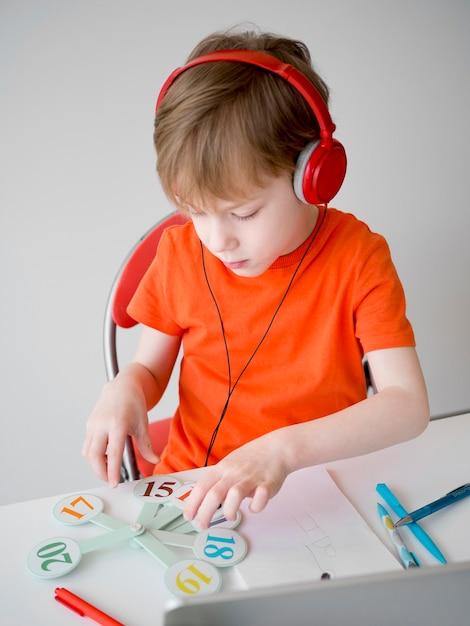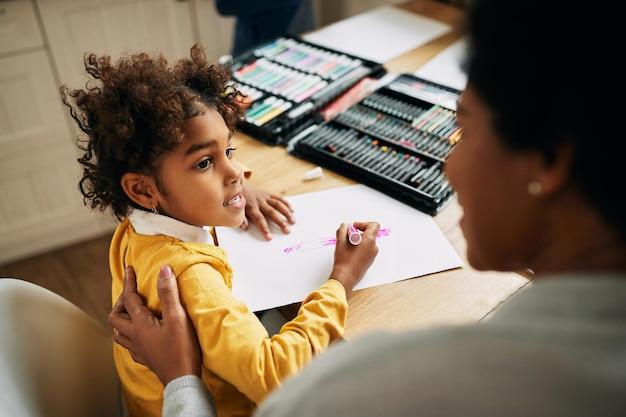Learning is a unique and individual process, with each person having their own preferred way of acquiring knowledge. While some individuals thrive in visual or kinesthetic learning environments, others excel in auditory learning settings. Auditory learners, as the term suggests, grasp information best through hearing and listening. However, like any other learning style, auditory learners also face their share of challenges.
In this blog post, we will explore the specific difficulties encountered by auditory learners. We will delve into how auditory learners learn best, the factors that contribute to student diversity, the various types of learners, and their needs. By understanding the barriers faced by auditory learners, educators and students alike can work towards creating inclusive and effective learning environments that cater to the needs of each individual.
So, if you’re an auditory learner looking for insights into your learning style or an educator seeking to support your auditory learners better, keep reading! This blog post will provide valuable information and tips to help you navigate the challenges faced by auditory learners in 2023 and beyond.

What are the Difficulties Faced by an Auditory Learner?
Understanding the Struggles of Those Who Learn Through Sound
Auditory learners, those brilliant minds who absorb information best through hearing, can face their own unique set of challenges in a world dominated by visual stimuli. While others may be happily reading or jotting down notes, auditory learners are left trying to catch every word and process it in real-time. Let’s dive into the exciting yet perplexing world of auditory learners and explore their common hurdles!
The Art of Active Listening
For auditory learners, listening isn’t just about passively hearing words; it’s about actively engaging with the information. Their ears become the gateways to their minds, and this constant need to focus can be downright exhausting. While visual learners can glance at a picture or diagram to grasp a concept, auditory learners must hang onto every word, making sure not to miss any crucial information.
Classroom Cacophony and Distracting Environments
Picture this: you’re sitting in a bustling classroom, desperate to concentrate on the teacher’s voice, but your ears pick up every little sound around you. The squeak of a chair, the shuffle of papers, the whispered conversation in the back row… Oh, the struggles of an auditory learner in a world filled with auditory distractions!
Memory Overload: Retaining All the Words
Remember those moments when you read a sentence and had to stop, reread it, and then it finally clicked? Well, auditory learners experience this dilemma with nearly everything they hear. While individuals with different learning styles might quickly move on, auditory learners often find themselves stuck in an audio loop, replaying and analyzing information repeatedly in their minds.
The Tricky Art of Note-Taking
Ah, the mysterious world of effective note-taking. It’s not just about jotting down every word like an overzealous transcriber. Auditory learners face the challenge of capturing key points while simultaneously processing new information. It’s like trying to balance on a slackline while juggling flaming torches—a tough act to master!
The “What Did They Say?” Conundrum
Misinterpretations and misunderstandings can be a daily struggle for auditory learners. While visual learners benefit from the clarity of written information, auditory learners rely on accurate and precise delivery. A simple slip of the tongue or a noisy interruption can leave them questioning what they heard and feeling like linguistic detectives trying to solve an audio puzzle.
While auditory learners possess a remarkable talent for absorbing information through sound, they also face a range of obstacles not encountered by other learning styles. From actively listening to battling classroom noise, these individuals navigate a world that often prioritizes visual learning. Understanding these challenges can help create a more inclusive and accommodating learning environment, ensuring the brilliance of auditory learners shines through loud and clear!

FAQ: Difficulties Faced by Auditory Learners
How Many Types of Learners Are There
When it comes to learning, we’re all unique individuals with our own preferred styles. While it would be simpler if there were just one or two categories, researchers have identified four main types of learners: visual, auditory, reading/writing, and kinesthetic. Each type has its own set of characteristics and preferred methods of learning.
What Are Examples of Learners’ Needs
Learners’ needs can vary greatly depending on their individual styles. For visual learners, having access to diagrams, charts, and other visual aids is crucial. Auditory learners, on the other hand, require clear and concise explanations, as well as opportunities to engage in discussions and listen to audio materials. Reading/writing learners may thrive on text-based materials, while kinesthetic learners excel when given hands-on activities and opportunities to move around.
What Are the Main Types of Learning
The main types of learning correspond to the different types of learners. Visual learners process information best through visual cues, such as images, graphs, and videos. Auditory learners, as the name suggests, learn most effectively through listening and speaking. Reading/writing learners excel at written language, such as reading, note-taking, and writing. Lastly, kinesthetic learners learn best through physical activities, like experiments, simulations, and role-playing.
What Are Some of the Diverse Learning Needs of Learners
Students have diverse learning needs that must be appropriately addressed for effective education. These needs can include accommodating different learning styles, providing a variety of instructional materials, and offering opportunities for interaction and discussion. It is essential to ensure that all learners have a chance to engage with the material in a way that resonates with them.
What Are the Needs of Learners in the Classroom
Creating an inclusive classroom environment involves meeting the diverse needs of learners. This includes catering to different learning styles, providing ample opportunities for participation, offering clear and accessible instructions, and fostering a supportive atmosphere. By addressing these needs, educators can enhance student engagement and promote effective learning outcomes.
What Are the Difficulties Faced by an Auditory Learner
Ah, the challenges faced by our auditory learners! While they thrive in situations where they can listen and engage in discussions, certain difficulties may arise. Auditory learners may struggle with retaining information presented in written form or when visuals are lacking. They could also find it challenging to concentrate in noisy environments or when instructions are not provided verbally. However, fear not! With the right strategies and support, auditory learners can overcome these hurdles and excel in their learning journey.
How Does an Auditory Learner Learn Best
To facilitate optimal learning for auditory learners, instructors can implement a few key strategies. First and foremost, delivering information verbally and encouraging active listening can significantly benefit these learners. Additionally, incorporating group discussions, debates, and oral presentations can create opportunities for engagement and reinforcement. Utilizing audio resources, such as podcasts or recorded lectures, can also be highly effective for auditory learners.
What Are the Factors That Bring Out Student Diversity
Student diversity is influenced by various factors, including individual learning styles, cultural backgrounds, prior experiences, and personal interests. These factors play an essential role in shaping students’ unique perspectives and approaches to learning. By acknowledging and embracing these differences, educators can foster a more inclusive and enriching learning environment for all.
So there you have it, some frequently asked questions about the difficulties faced by auditory learners. Understanding the challenges and needs of auditory learners can help both students and educators create an environment that supports effective learning for all. Embracing diversity and tailoring instructional methods to different learning styles is the key to unlocking the full potential of every student. Keep these insights in mind, and let’s pave the way for vibrant and engaging classrooms in 2023 and beyond!
